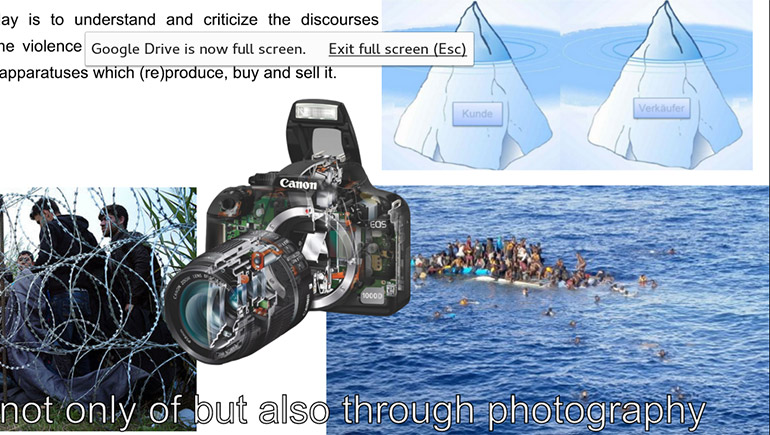Last month we were lucky enough to get the Hybrid Lab again for our Kollisionswoche session on “Vilém Flusser and the Arts”. For those who don’t know, the Kollisionswoche is an intensive program organized by the Studium Generale of the UdK Berlin during the first week of the year where students from all the various disciplines are encouraged to come together and explore synergies and new possibilities of collaboration and exchange.
Approximately 300 students participated this year in 14 groups, typically working towards the big showcase at the end of the week, where all the different mixed groups can see what the others were doing. In our group we had students from fashion design, fine art, product design, architecture, stage design, dance and GWK (Gesellschafts- und Wirtschaftskommunikation/ Social and Economic communication) engaging with the theories of communications theorist Vilém Flusser.
On the first day, after introductions, we read and discussed Flusser’s For a Philosophy of Photography. This book is a good starting point to understand Flusser’s concerns, especially with the impact of technology on society. He analyses the epochal shift around the invention of the alphabet, and how it eventually leads to the next revolutionary stage with the invention of photography. For Flusser, photography is the archetype of what he calls “technical images” – the images we are surrounded with today. Flusser explains that these images are created to help explain the scientific “texts” which are encoded into our technologies, in this way, by understanding technical images we can exercise real autonomy in a world largely over-determined by technical processes.
On the next day we left the Hybrid Lab to visit the exhibition I curated with UdK-Professor Siegfried Zielinski BODENLOS: Vilém Flusser and the Arts. This exhibition attempts to intertwine Flusser’s biographical trajectory with his “communicological” thinking. Flusser was a thinker in exile, having been forced to flee at age 19 from the Nazi occupation of his birthplace Prague. Thanks to the family of his future wife Edith, Flusser escaped the holocaust which would claim the rest of his family, stopping first in London before continuing on to Brazil where he would spend the next 30 years of his life.
In his biography Bodenlos, and in the collection of essays Freedom of the Migrant Flusser explored the migrant’s identity, turning the pariah status around and elaborating its advantages. The figure of the migrant in his writing becomes the quintessential post-modern consciousness. The freedom of the migrant, according to Flusser, is not just a negative freedom from destruction or repression, it is a positive freedom to choose one’s affiliations and relationships with others freely and independently of borders, class and nations. Flusser saw in the migrant the utopian citizen of the new information society where the walls of houses and borders of nations are “perforated by visible and invisible cables like Emmenthaler cheese.”
Heavy reading! For the next two days the students split into groups to produce projects where they tried to synthesize their reflections from the first two days. We spread out in the Hybrid Lab and happily dug into all the materials we could find there. One group even incorporated some abandoned 3D prints from another workshop, as well as a dysfunctional VGA cable into their own installation of a web of cultural influences. One student made a transparent robe with pockets full of alphabetical signs. Another collaged photographs, screenshots and other digital image material related to the current migrant crisis. Yet another student, inspired by Flusser’s critique of mass media in an interview with Harun Farocki screened in the exhibition, made three versions of a tabloid front pages all with the same images but with differing headlines and captions.
Hybrid Lab is the place for interdisciplinary projects! And it is even better as a space where students from the UdK Berlin and TU Berlin explore new projects, new ideas, and new ways of working together!
– Baruch Gottlieb

